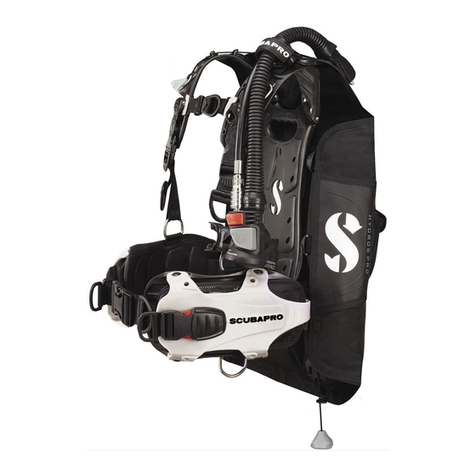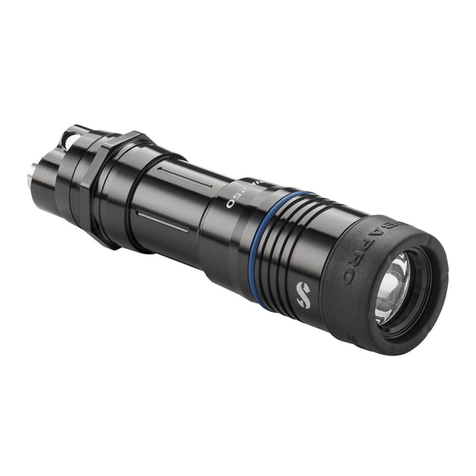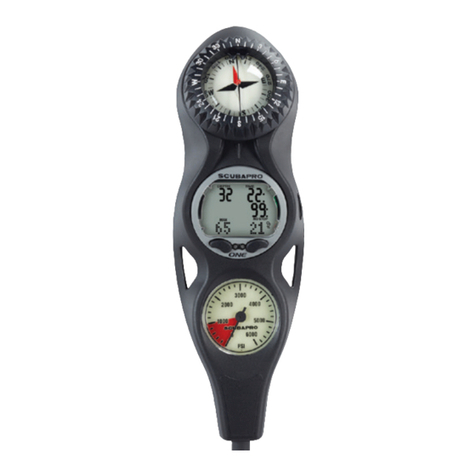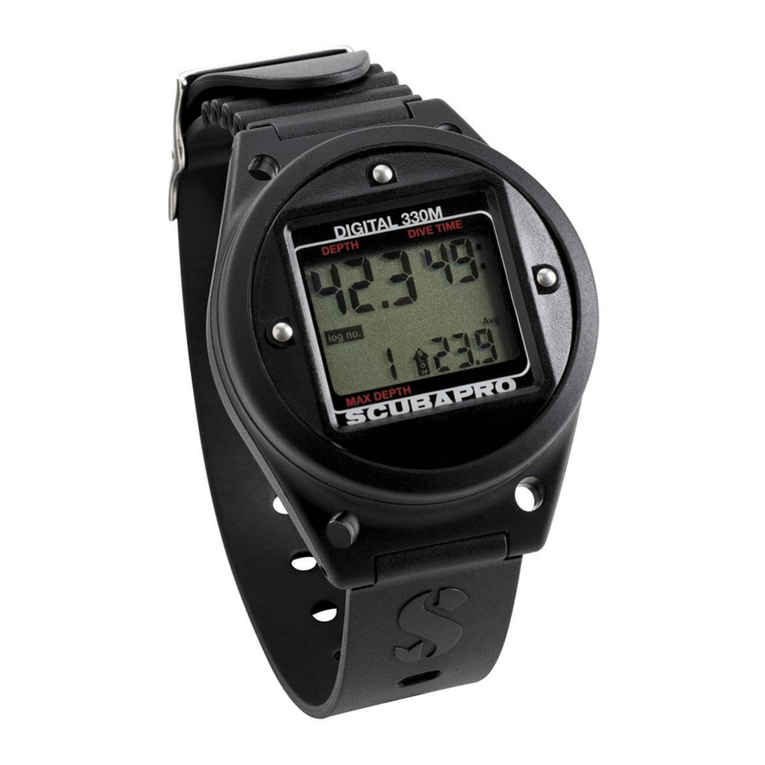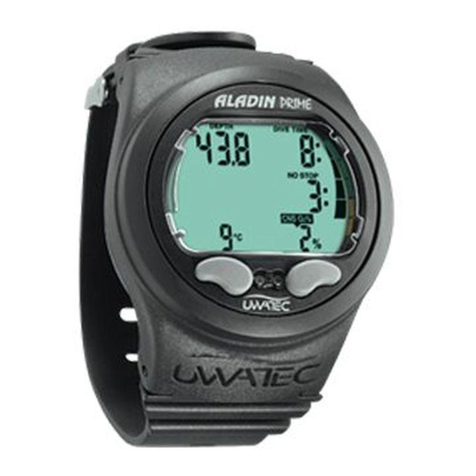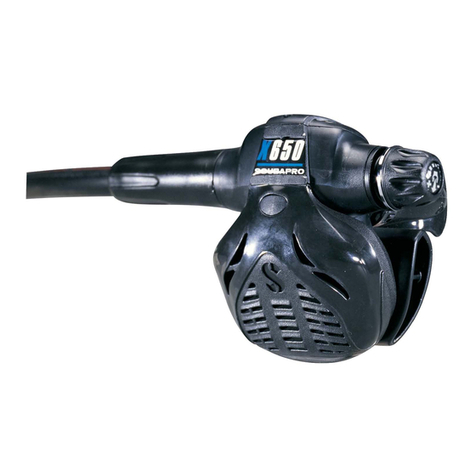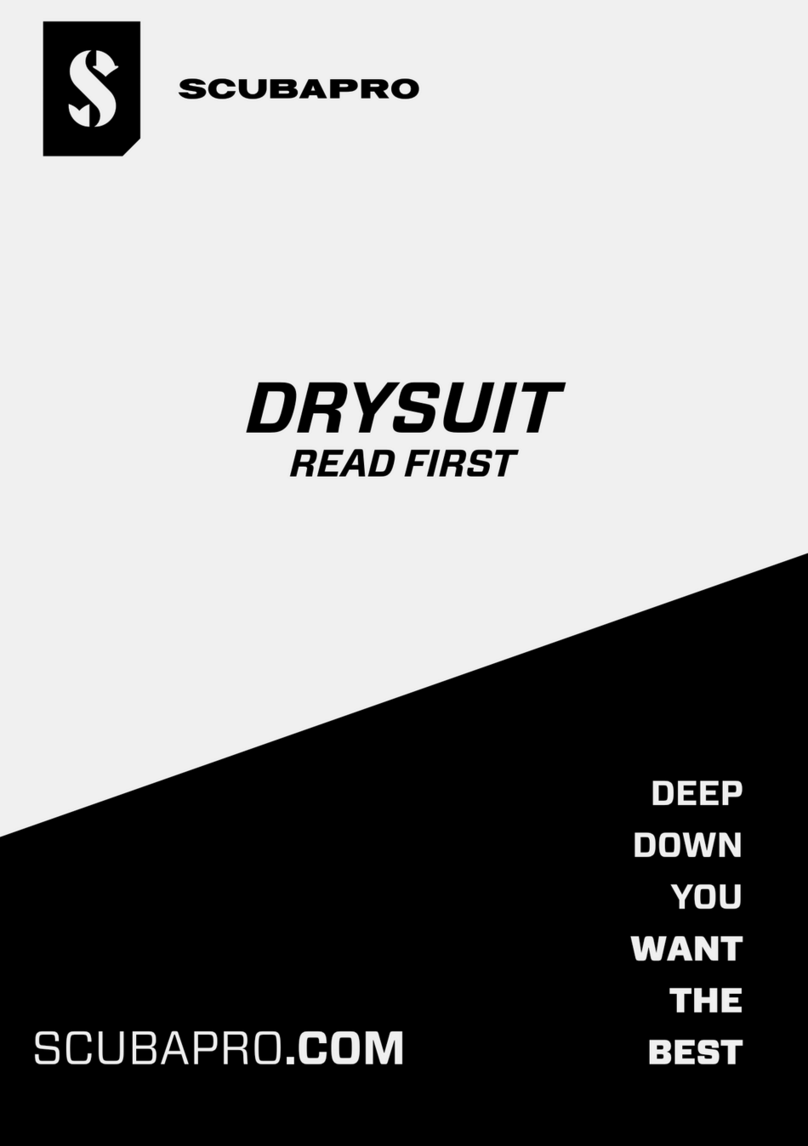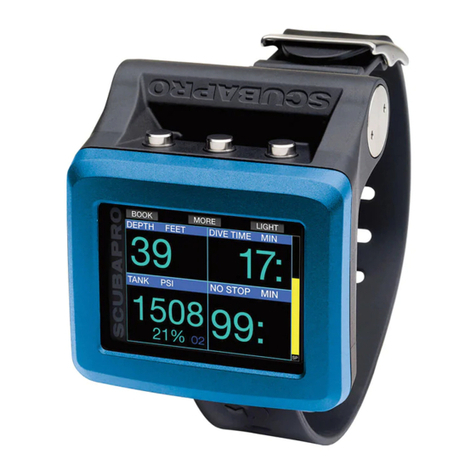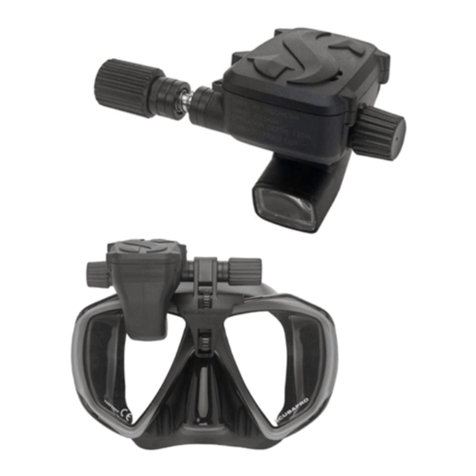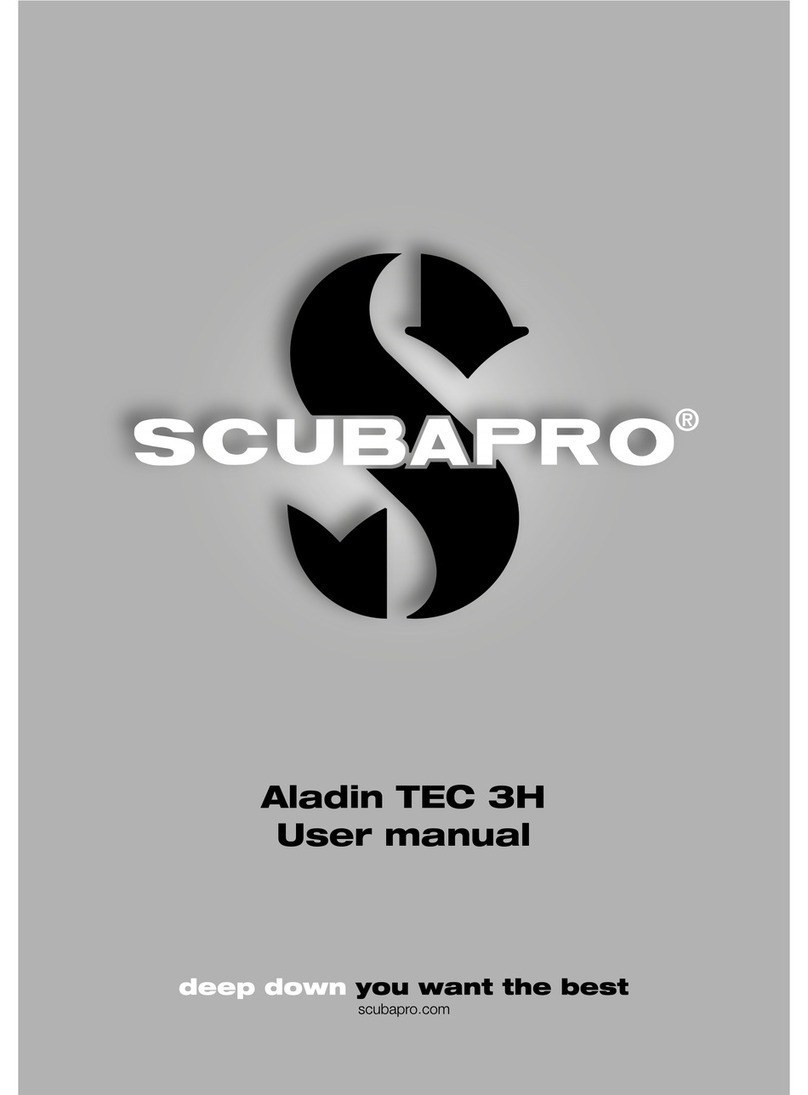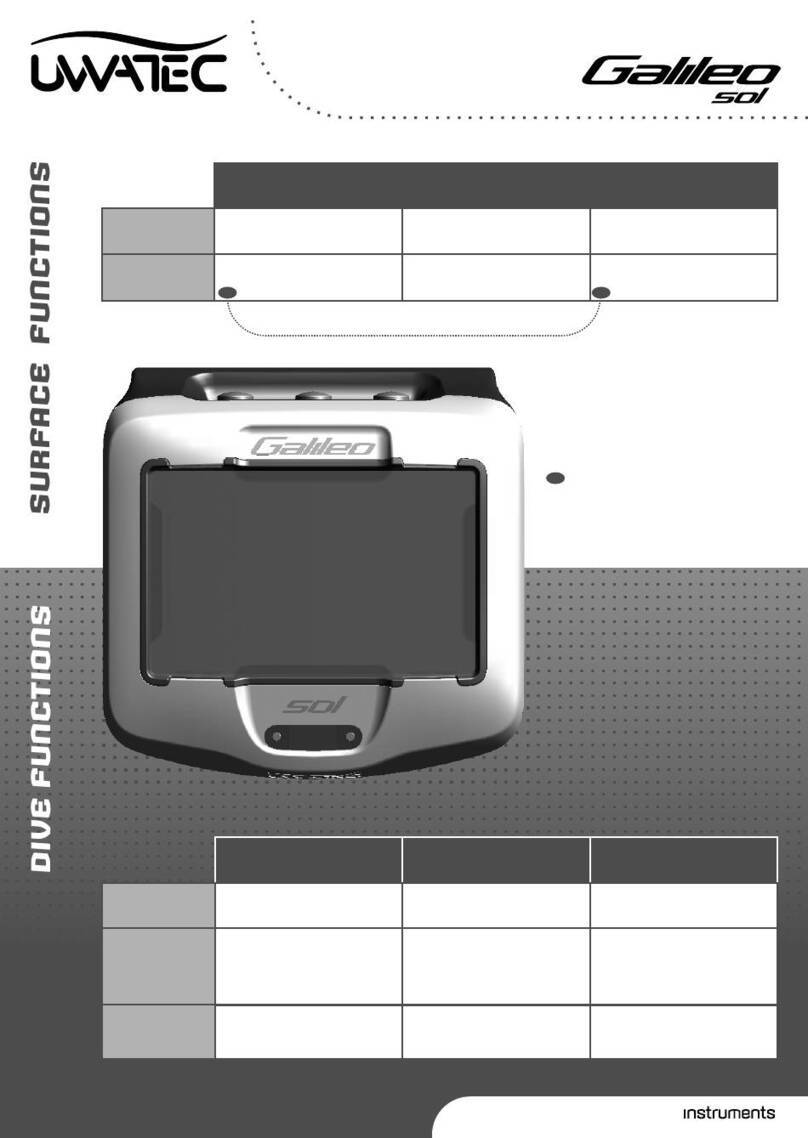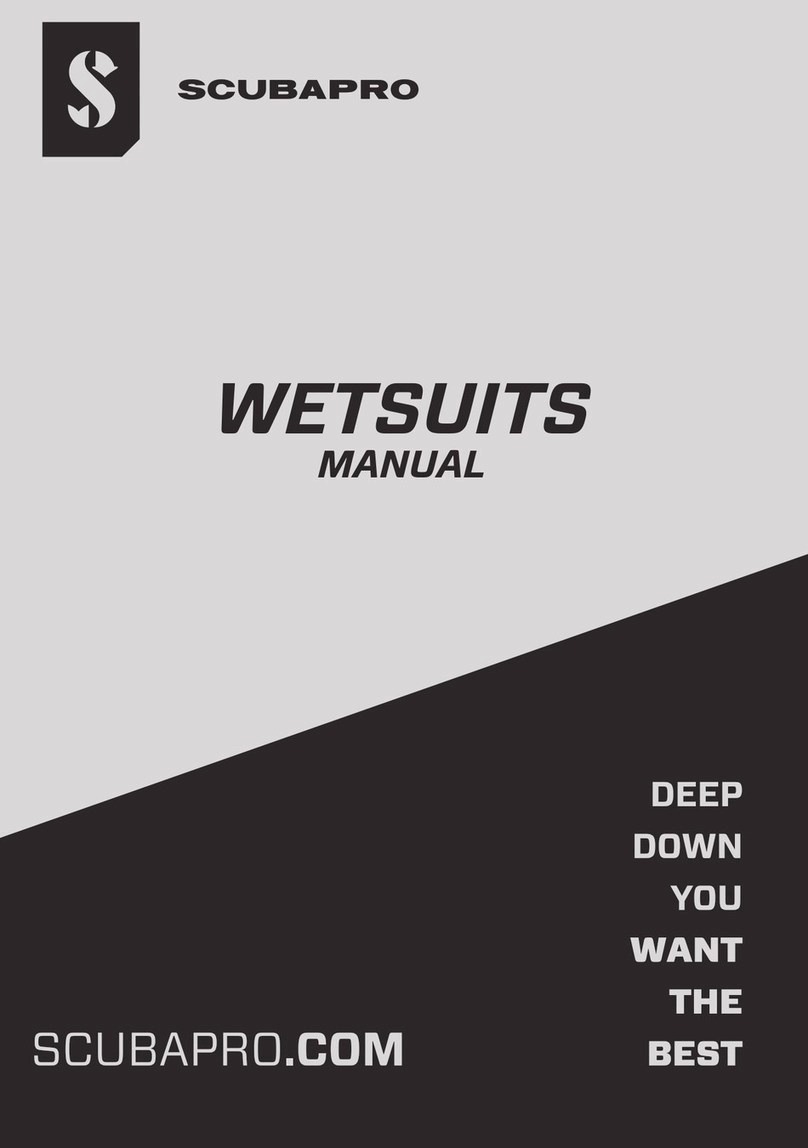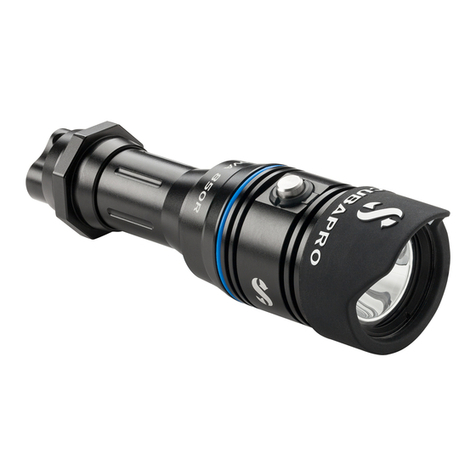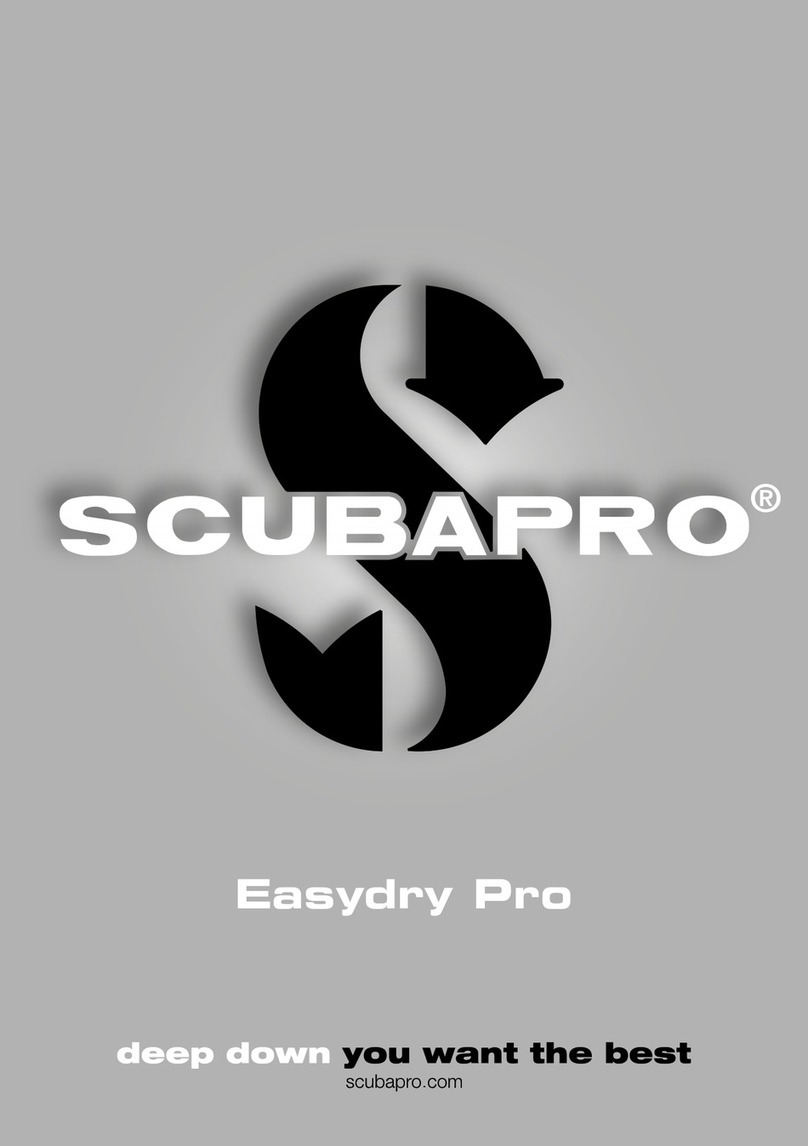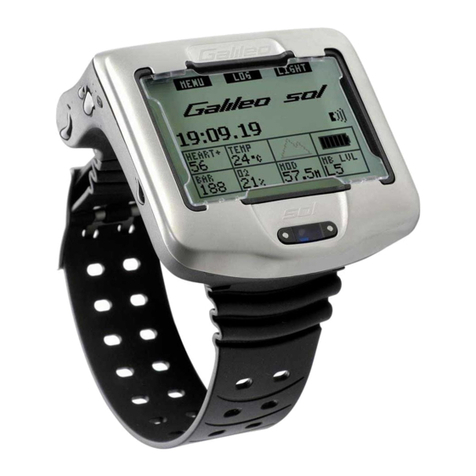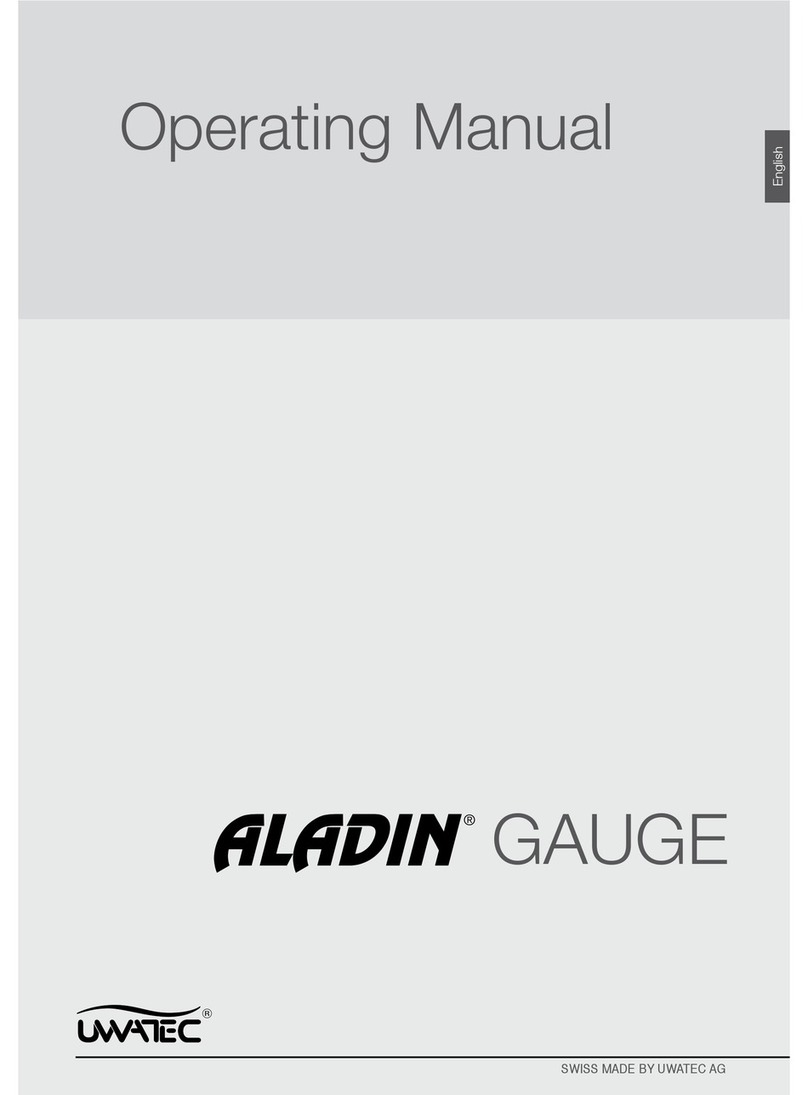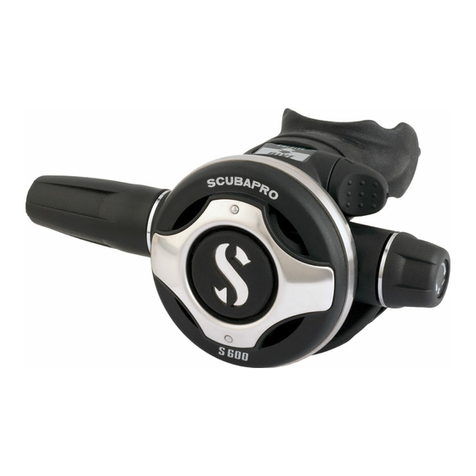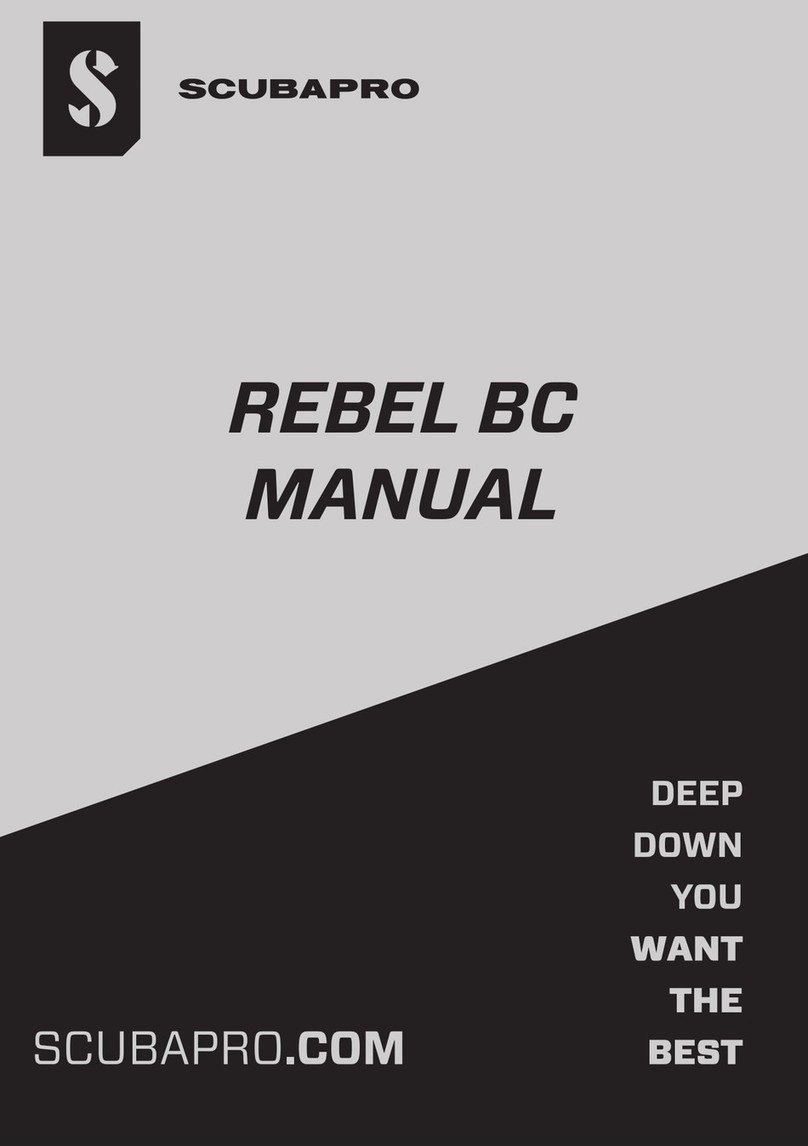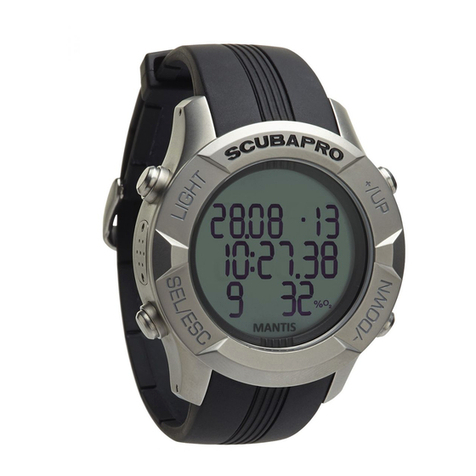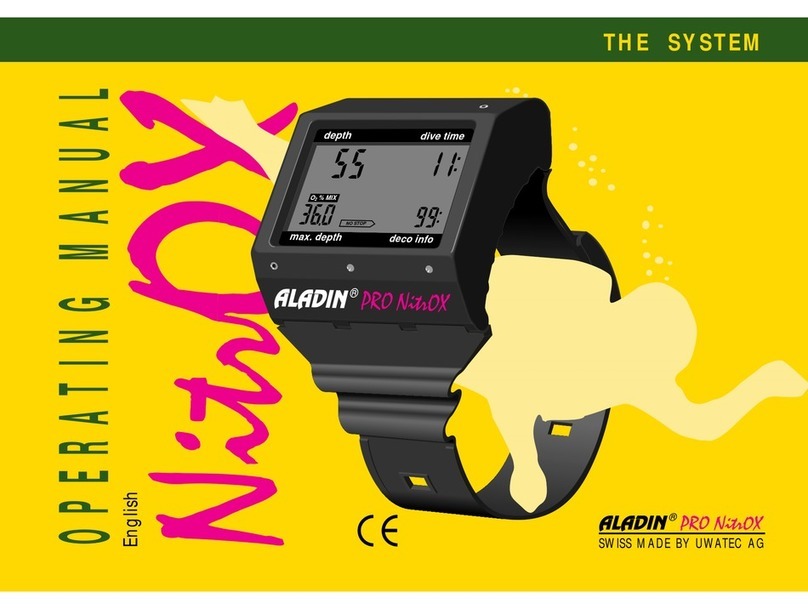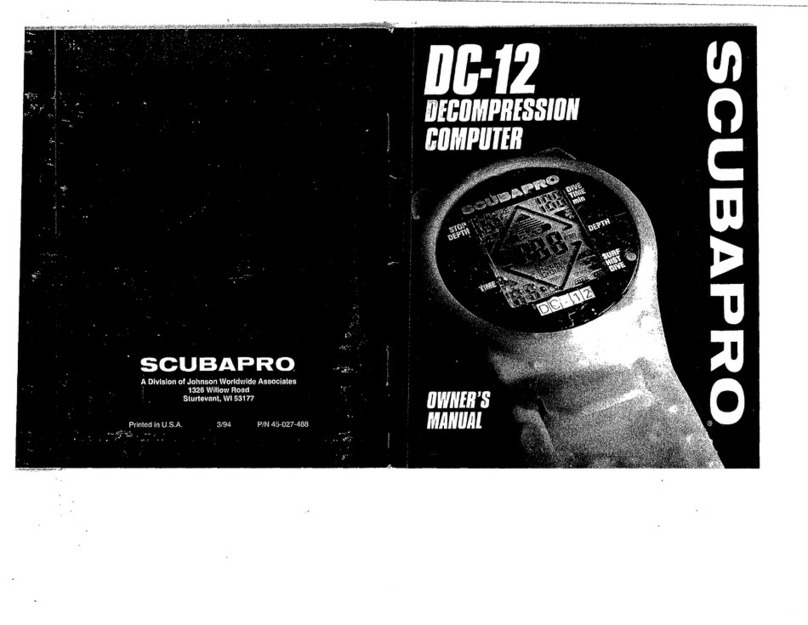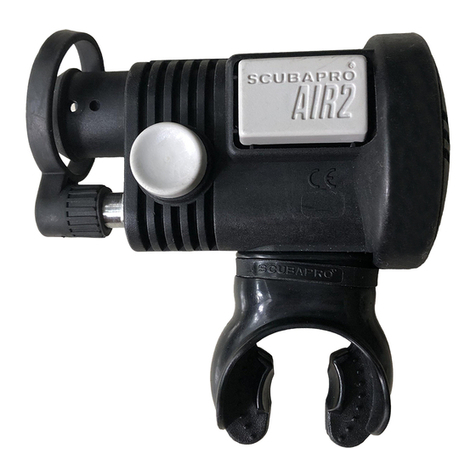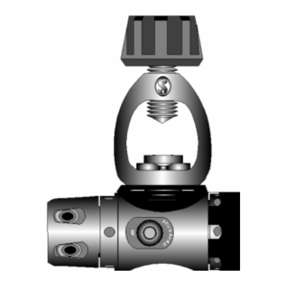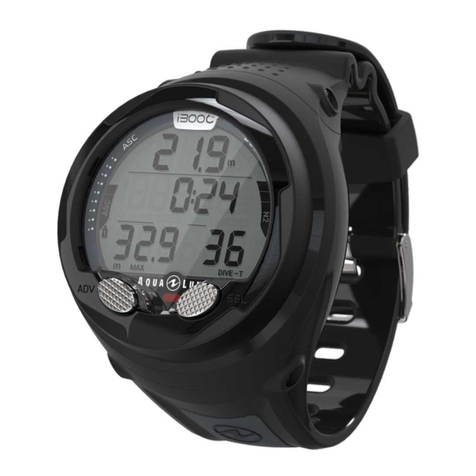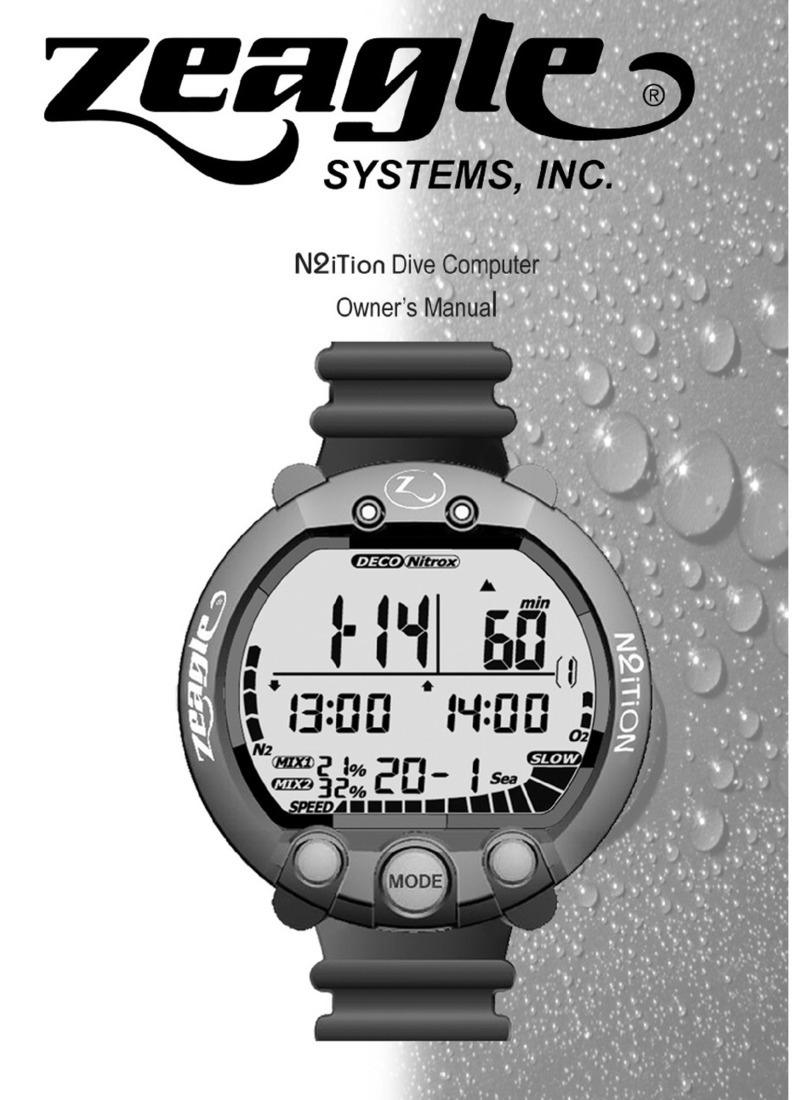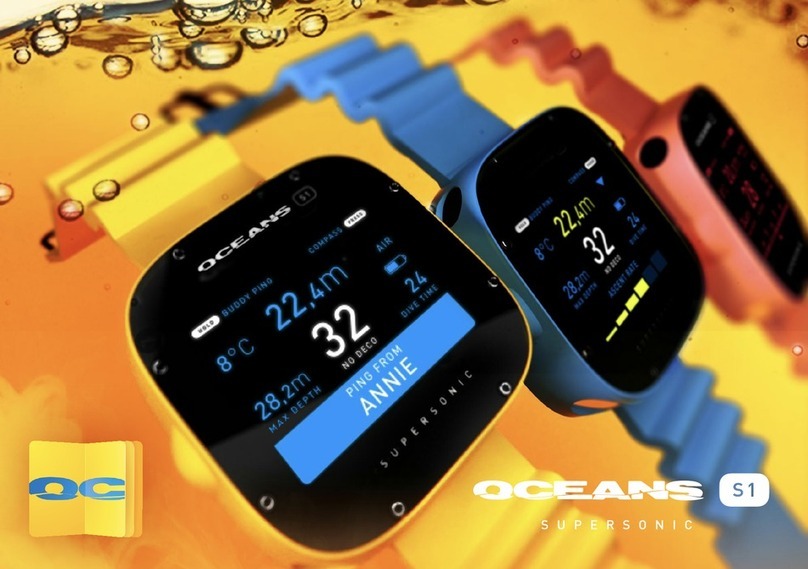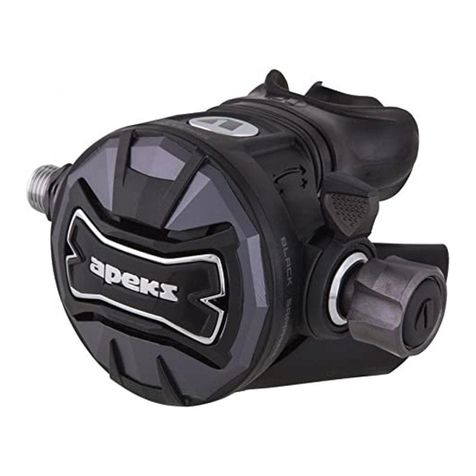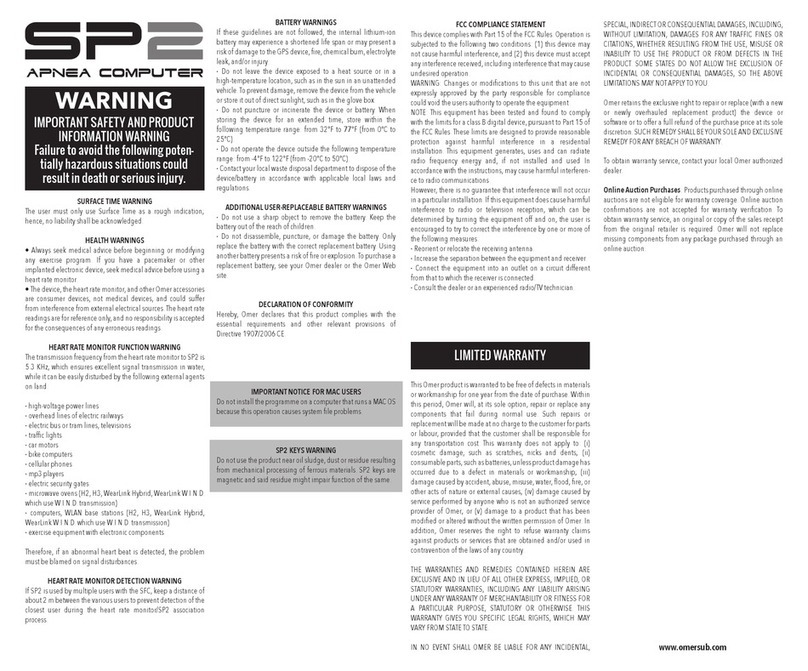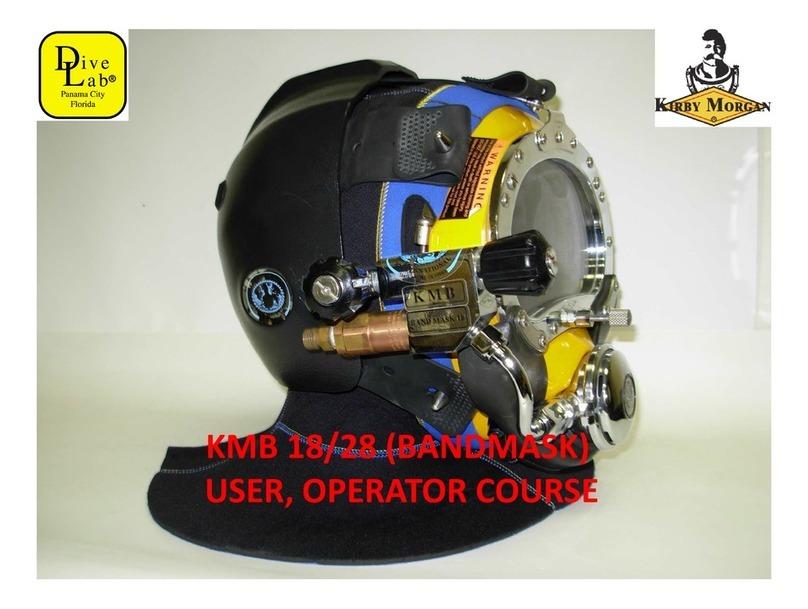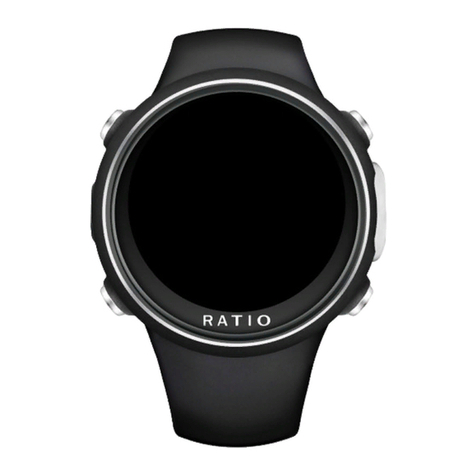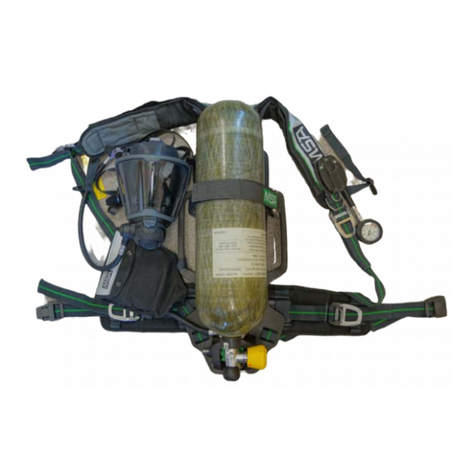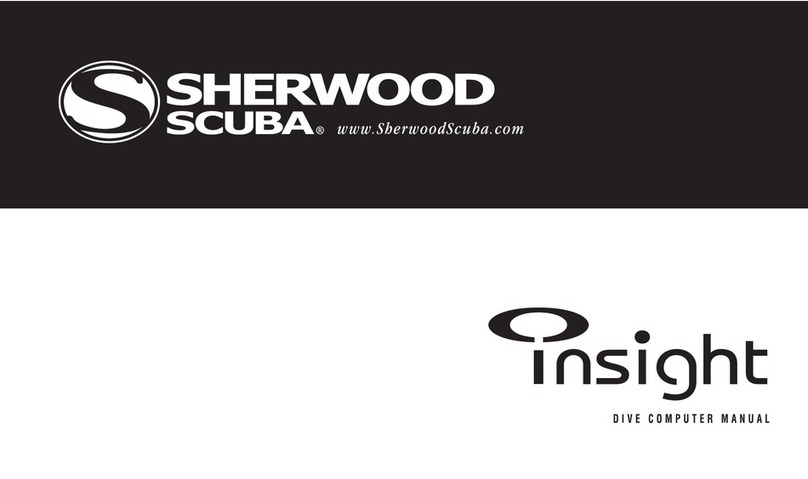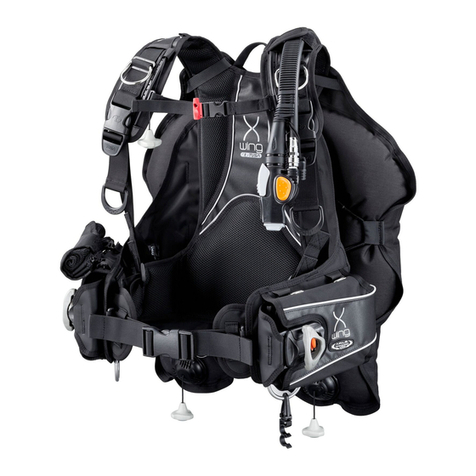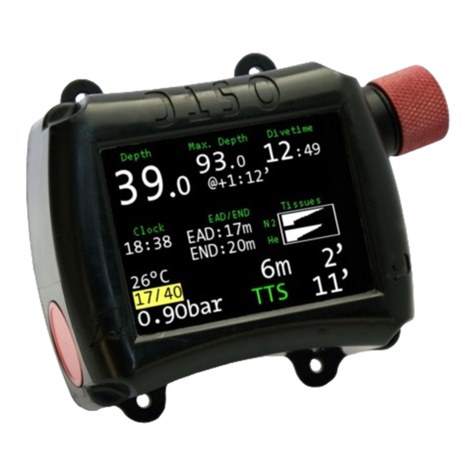2
Safety considerations
UWATEC® Smart dive computers
You must carefully read and understand this entire manual before using your new computer.
Diving has many inherent risks. Even if you follow the instructions of this
manual in a careful manner, it is still possible that you may be seriously injured
or die from decompression sickness, oxygen toxicity or some other inherent
risk of scuba with Nitrox or compressed air. Unless you are fully aware of these
risks and are willing to personally accept and assume responsibility for those
risks, do not use the computer!
Guidelines for the use of your UWATEC dive computer:
The following guidelines are derived from the latest medical research and the recommendations of the
American Academy of Underwater Sciences for diving with diving computers. Following these guide-
lines will greatly increase your safety while diving, but cannot guarantee that decompression sickness
or oxygen toxicity will not occur.
• This computer is designed for dives with Nitrox (to a max.100% O
2
) and compressed air (21%O
2
) only.
Do not use the computer for dives made with other mixed gases.
• It is absolutely necessary to check the set mixture before each dive and to compare it to the gas mixture
currently used. Always remember: setting an incorrect mixture carries an inherent risk of decompression
sickness and/or oxygen toxicity! Maximum deviation from the measured mixture must not exceed 1%
O
2
. An incorrect gas mixture can be lethal!
• Only use this computer with open circuit breathing systems. The computer must be set for a determined
gas mixture.
• Only use this computer for diving with an independent breathing apparatus. The computer is not
designed for long term exposures with Nitrox.
• Always observe the visual and audible alarm signals of the computer. Avoid situations of increased risk
which are marked with a warning sign in this operating manual.
• If the ascent arrow appears, start to ascend.
• If the flashing ascent arrow appears, start to ascend immediately.
• This computer has a ppO
2
warning, the default limits of which are set at 1.4 bar ppO
2
max. This limit
can be adjusted via SmartTRAK. An alteration of the ppO
2
max to higher than 1.6 bar is dangerous and
we do not recommend this.
• Frequently check the "oxygen clock" (CNS O
2
), especially in the range higher than 1.4 bar ppO
2
.
Ascend and finish the dive if the CNS O
2
exceeds 75%.
• Never dive deeper than the Maximum Operating Depth (MOD) pertinent to the gas mixture in use.
• Always check the diving limits considering the oxygen content and standard sports diving procedures
(decompression sickness, oxygen toxicity).
• In accordance with the recommended maximum diving limit of all instructional agencies, do not dive
deeper than 40 metres/130 feet.
•
The danger of nitrogen narcosis has to be taken into consideration
. The computer gives no warning
about this.
• On all dives, with or without dive computer, make a safety stop for at least 3 minutes at 5 metres
(15 feet).
• All divers using dive computers to plan dives and indicate or determine decompression status must use
their own computer, which they take with them on all dives.
• If the computer fails at any time during the dive, the dive must be terminated, and appropriate surfac-
ing
procedures (including a slow ascent and a 3 to 5 minute safety stop at 5 metres /15 ft) should be
initiated
immediately.
• Comply with the ascent rate and carry out any decompression stop required. If the computer should
fail for any reason, you must ascend at a rate of 10m (30 feet) per minute or less.
• On any given dive, both divers in a buddy pair must follow the most conservative dive computer for
that particular dive.
• Never dive without a buddy. Smart Z does not substitute for a dive buddy.
• Only make dives that are appropriate to your level of dive training. A dive computer does not increase your
knowledge of diving.

